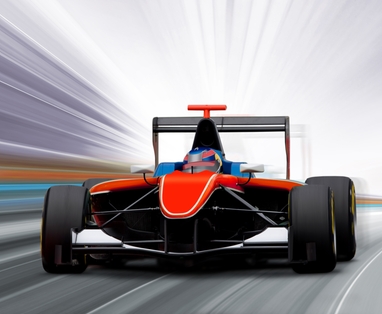The Beginnings of Formula One
Automobiles were raced as soon as they started being produced. Grand Prix racing was popular starting in the late 1890s in Europe. Races were first conducted on open roads from town to town. These early races had no standardized rules or regulations and each country operated their own events independently. After World War 2, the Fédération Internationale de l’Automobile (FIA) went forward with creating a standard set of rules for competition. They also announced a multinational series of races to take place in 1950 in order to determine the first worlds driver championship for the premier racing level in motor sports. The Formula One championship was born.

The Teams
Italian constructors Ferrari, Alfa Romero and Maserati dominated the first years of competition. Argentinean drive Juan Manuel Fnagio was the early star in F1 racing, winning 5 championships in the first 7 years of competition. 1958 marked the introduction of the constructors championship, and the first year a mid-engine car, which happened to be operated by a private team, won a F1 race.
Technology
Other teams began designing mid-engine cars and researching the effects of aerodynamics on car speed and cornering. To help offset some of this cost, 1968 marked the first year advertising and logos began appearing on the sides of cars. The 1970s brought the advent of the turbocharger, and speed and power continued to climb. This new power carried a high cost which was paid for by the lives of drivers and fans. In 1973, Jackie Stewart retired the day before what would have been his final race when a close friend and team mate was killed during practice for the US Grand Prix. Emerson Fittipaldi refused to race in the 1975 Spanish Grand Prix after a car veered of into the crowd and killed four spectators.
Throughout the 70s and 80s driver safety and car technologies continued to grow with manufacturers McLaren and Williams dominating the 1980s. McLaren won the drivers championship seven of eight years in the 80s and won 15 out 16 races between drivers Alain Prost and Ayrton Senna in 1988. Turbocharged engines were banned in 1989 and technology development focused on new areas such as traction control systems and semi-automatic gearboxes. Another success engineers could claim was much improved driver safety with no driver deaths from 1986 though the 1990s.
Senna and Beyond
This period came to a tragic end in the 1994 San Marino Grand Prix with the death of 3 time Brazilian champion Ayrton Senna. Cars were then required to fit within special dimensions designed to improve impact safety on the car cockpit. Down-force was reduced and grooved tires were introduced in order to reduce cornering speed. No driver has since been killed in a F1 race. Ferrari handled the new rules impressively with driver Michael Schumacher winning a record 7 drivers championships from 1994 through 2004. Rules and technology have continued to change with new drivers and teams entering the sport while others retire, and return. Today, Formula 1 is the most watched motor-sport reaching new regions in the far east, and around the world.
This post was provided by John Kester, a formula 1 fan. He suggests to car racing enthusiasts to get their f1 tickets from http://www.f1prive.com/.
A Brief History Of F1 Racing

